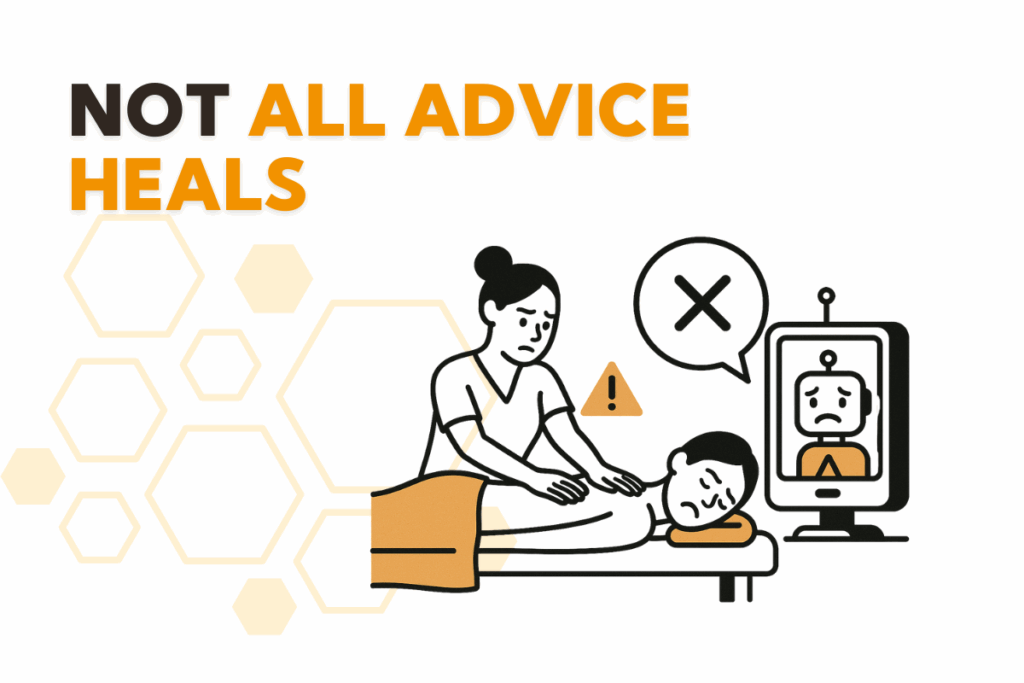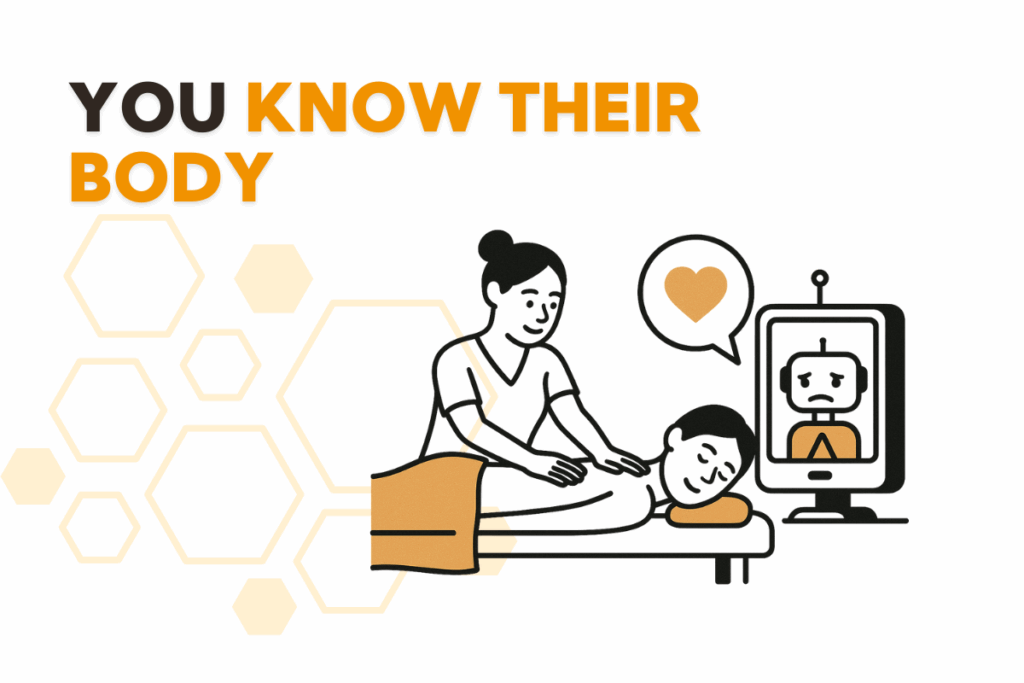Clients quoting AI advice in sessions? Here’s how to stay confident, keep trust strong, and protect your treatment plan.
Clients Are Quoting Chatbots. Now What?
When AI contradicts my treatment plan, it’s more than just a moment of frustration. It raises doubts in clients, interrupts progress, and creates tension in the treatment room. You’ve done your assessment. You’ve chosen a thoughtful, informed approach. Then a client walks in, phone in hand, and questions it based on something a chatbot suggested.
You’re not being questioned because you’re wrong. You’re being challenged because the information feels convincing—even if it misses the context only you can provide.
Why These Conflicts Are Happening More Often
Treatment decisions need context. Algorithms don’t offer that.
When AI contradicts your treatment plan, it’s usually because the advice was based on general knowledge, not the client’s specific condition or history. A chatbot can’t see the way someone moves or assess how their tissues respond to pressure. It can’t recognize that a client’s chronic condition calls for gentler work this week, not aggressive deep tissue.
Examples that might sound familiar:
- The client says they should be using heat because that’s what they read online, even though you recommended ice based on visible inflammation.
- Someone asks for cupping because they saw it trending on social media, even though it’s contraindicated in their case.
- A long-time client says, “The chatbot told me I should be stretching this more,” when you’re actually working to limit that range temporarily for stability.
Each of these examples shows how easily trust can get tangled when AI contradicts your treatment plan.

The Real Cost: Doubt and Disconnection
You’re not just fighting bad info—you’re protecting the relationship
Massage therapy is built on trust. So when a client suddenly doubts your recommendation, it doesn’t just interrupt the plan—it impacts how safe and supported they feel. And it can leave you questioning whether you’ve lost their confidence.
That emotional labor adds up. It’s exhausting to explain your work every session or justify why you’re not following the advice they found online.
Smart Ways to Respond Without Losing Trust
Start with curiosity
Your client isn’t trying to be difficult. Most are trying to participate in their care. So when AI contradicts your treatment plan, take a breath and lean into conversation.
Try this:
“I love that you’re looking into ways to support your healing. Let’s look at how that advice fits into what we’re doing for you.”
Personalize your explanation
Help the client understand why your approach is tailored to them.
Try this:
“That’s good general advice, but in your case—because of how your hip moved last week—we’re adjusting our focus.”
When AI contradicts your treatment plan, what restores clarity is showing the why behind your decisions.
Invite their research into the session
Clients may feel unsure about bringing online information to you, especially if it challenges what you’ve said. Create space for them to do that openly.
Try adding this to your intake forms or follow-up messages:
“If you come across something that confuses or interests you between sessions, bring it in. We’ll go over it together and see what fits.”
When AI contradicts your treatment plan, this approach helps you stay the guide, not the gatekeeper.
A Stronger Message: You Bring More Than Technique
Remind yourself—and your client—what only you can offer
Algorithms don’t assess tension patterns in real time. They don’t feel when a muscle releases or adapt based on emotional cues. They don’t hold space when a client is vulnerable.
When AI contradicts your treatment plan, it can never replace what your hands, your training, and your intuition deliver in person.
Clients need a practitioner who sees them, not a general suggestion box.

Don’t Let Manual Tasks Drain Your Time
When you’re dealing with repeated client questions or second-guessing, the last thing you need is more admin work on your plate. Simplify your day so you can focus on what matters most.
Use tools that protect your time and professionalism:
- With automated email and text reminders, clients stay informed and show up prepared.
- Electronic SOAP notes for massage therapists keep your rationale at your fingertips, so you can revisit and reinforce your plan with clarity and ease.
These systems support the confidence you bring to every session.
You’re Not Being Replaced. You’re Being Respected.
If you’ve felt deflated after a session where AI contradicted your treatment plan, know this: your clients still need you. They’re just navigating a flood of information and trying to make sense of it.
When you create space for those conversations, stay grounded in your clinical reasoning, and keep the relationship at the center of care—you become the steady voice in the noise.
That’s something no algorithm can offer.
FAQs
Stay calm and explain how your plan is based on their specific assessment. Reinforce your professional reasoning without confrontation.
Yes. Add a simple statement like, “We welcome outside information, but treatment decisions will always be based on clinical findings and personal history.”
Most likely, yes. More clients are looking things up before and after appointments. That’s not a threat—it’s a chance to guide them toward what’s right for their body.
Use practice tools that streamline communication and charting. That way, you can spend more time treating and less time explaining.


